John Rylands Library – A literary jewel in Manchester
Victorian structure is a veritable architectural museum, housing some of the oldest and rarest works from history
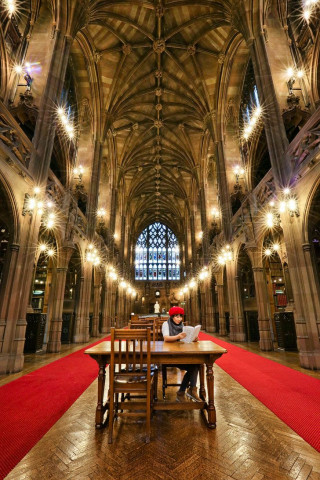
PHOTO: HAJERA SAEED
For those who don’t know, John Rylands was Manchester’s first multi-millionaire, having the biggest cotton manufacturing business in the UK. After his passing, his wife Enriqueta Rylands wanted to honour him and Manchester – a city she had come to love. Impressed by Basil Champney’s work on Mansfield College, she commissioned the architect to design the building, drawing inspiration from the libraries in Oxford and Cambridge.
Interior work
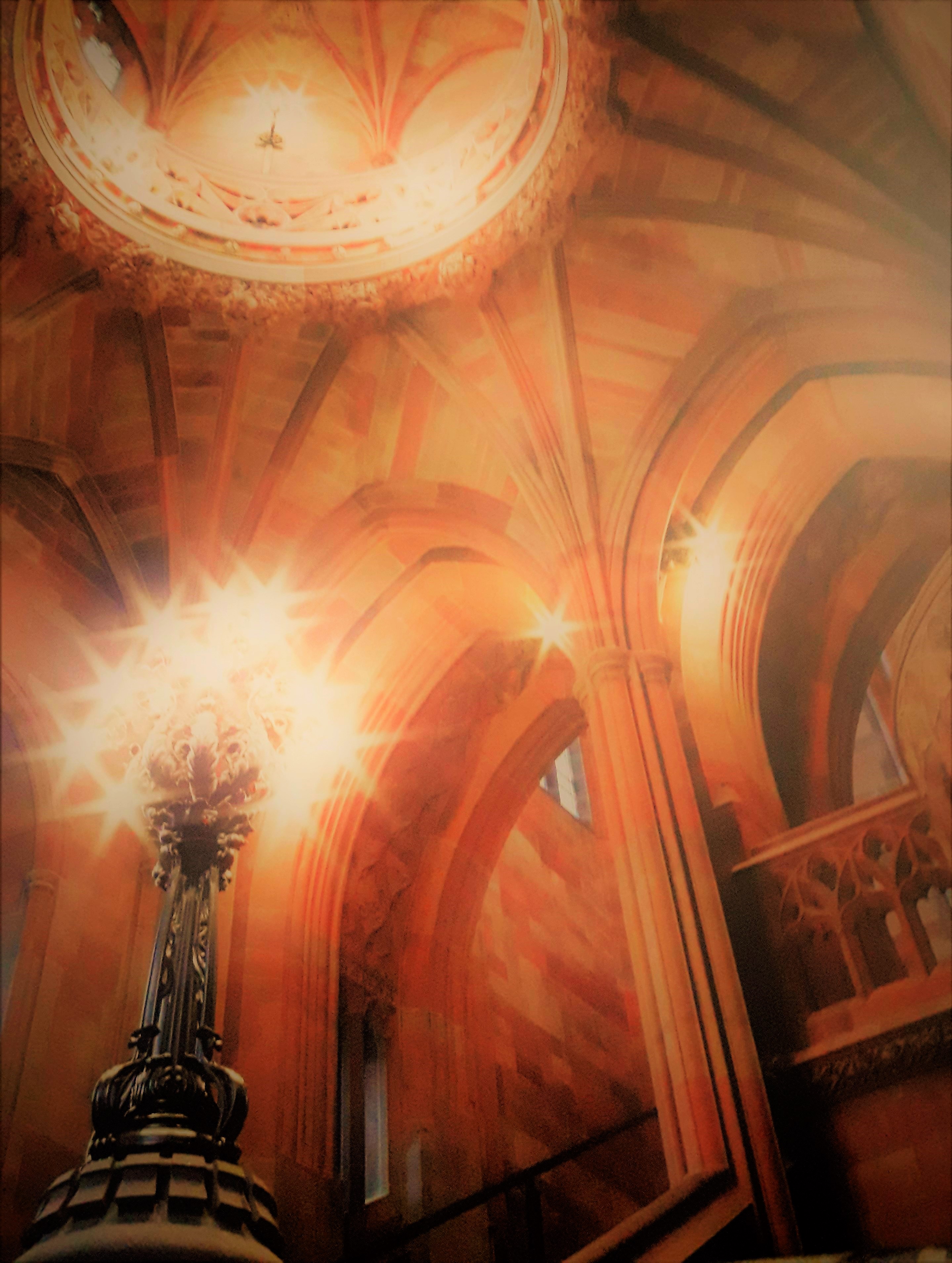 PHOTO: HAJRA SAEED
PHOTO: HAJRA SAEEDJohn Rylands Library took a whopping 10 years to be finished and that’s evident in every corner of the stunning structure. Only the best materials were used for the construction and the finest craftsmen employed. The four major elements used are Cumbrian sandstone called shawk in rose pink and soft grey, top Polish oak from Gdansk, white plasterwork and bronze ‘Art Nouveau’ light fittings/holders powered by electricity that was generated on the site. The library was also one of the first buildings to have this feature.
Lavish ornamentation adds to the charm of the library. There are splendid carvings in the stonework and fan vaulting comprises of birds, bats, dragons, foliage, monkeys, mythical creatures, as well as the red rose of Lancashire. Its original entrance and sprawling main staircase have been described as ‘one of the most interesting Gothic spaces of the 19th century.’
A historic reading room
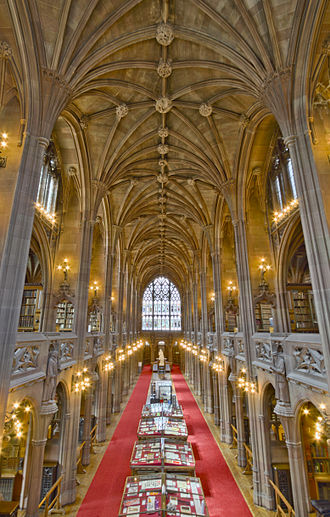 PHOTO: HAJRA SAEED
PHOTO: HAJRA SAEEDAs one walks through, they will immediately be struck by the opulence, grandeur and sheer skill. The room has been built 30 feet above street level so as to minimise the noise for readers and bring in maximum daylight. White marble statues of John and Enriqueta Rylands can be found on each end and behind them are large stain-glass windows with portraits of leading religious and literary figures, as well as artists and scientists.
The collections
From the very beginning, great precautions were taken to preserve the rare books inside, so much so that during World War II, the library staff hid the more valuable publications in the English countryside. As of today, John Rylands Library boasts of 1.4 million items. These include 400,000 books and one million manuscripts, maps, archives, photographs and visual materials spanning over 5,000 years of the history and writing from all over the world. There are even books as small as human fingernails!
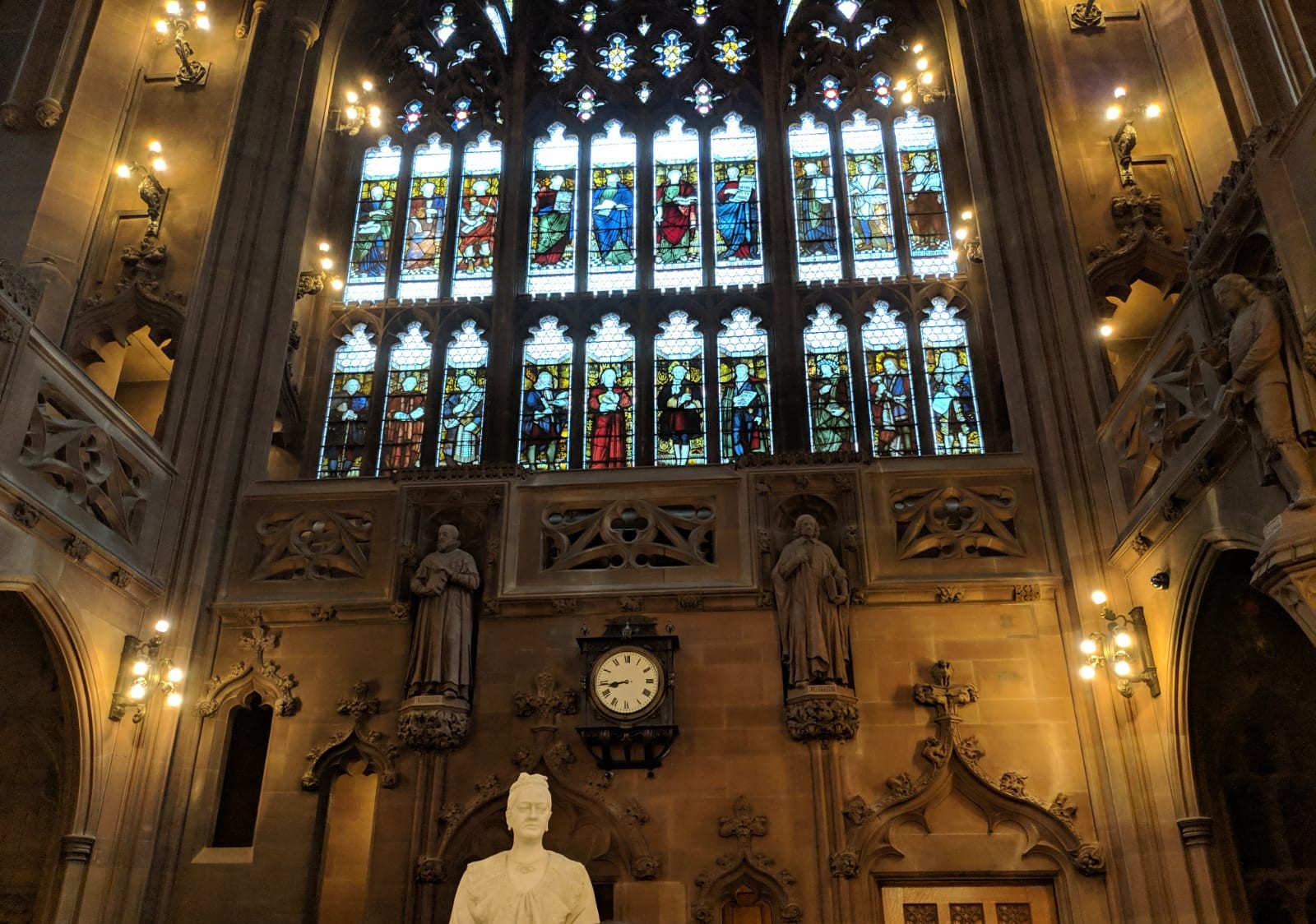 PHOTO: HAJRA SAEED
PHOTO: HAJRA SAEEDThe highlights, however, are displayed in the Rylands Gallery with the following categories:
Bible:
The collection of Bibles is diverse and internationally acclaimed. One of the most famous is St John’s Gospel, an irreplaceable fragment of papyrus (P52) featuring Greek writings.
Books from various faiths:
Texts from nearly all religions of the world are present. One can view an ancient, 14th century Hebrew manuscript as well as the Bhagavata Purana – a 15-meter-long sacred Hindu manuscript penned on silk.
Personal items:
John Rylands Library is home to a varied collection of letters, diaries, journals and other narratives by ordinary people from yesteryears and the rich and famous from different cultures too.
Literature:
Epic of Gilgamesh – possibly the oldest written piece of literature in cuneiform script on a clay table – also rests here. Then there is a first edition of William Shakespeare’s sonnets and other texts including major works by 19th century poets and novelists.
Manchester:
The library is an important source of information on Manchester – one of the world’s first and greatest industrial cities. The region has seen many historic factory reforms, the abolition of slavery and the emancipation of women, the official documents for all of which are housed here.
Science and medicine:
The archives section contains a host of material related to science and medicine. Andreas Vesalius’ pioneering ‘De Humani Corpios Fabrica’ (1453) is an example of the thousands of medical texts, including papers by Hippocrates and Galen, as well as unique documents representing different aspects of medical history starting from 18th century. There are also early editions of works by Aristotle, Euclid, Pythagoras, Galileo, Copernicus, Newton and Boyle.
Arts and crafts:
John Rylands Library spans all milestones of printing. There is Gutenberg’s 42-line Bible (the first book to ever be printed using a printing press in 1455). John Audubon’s spectacular Birds of America lies here. The revival of the English Private Press Movement is well represented as well.
Unlocking the Rylands
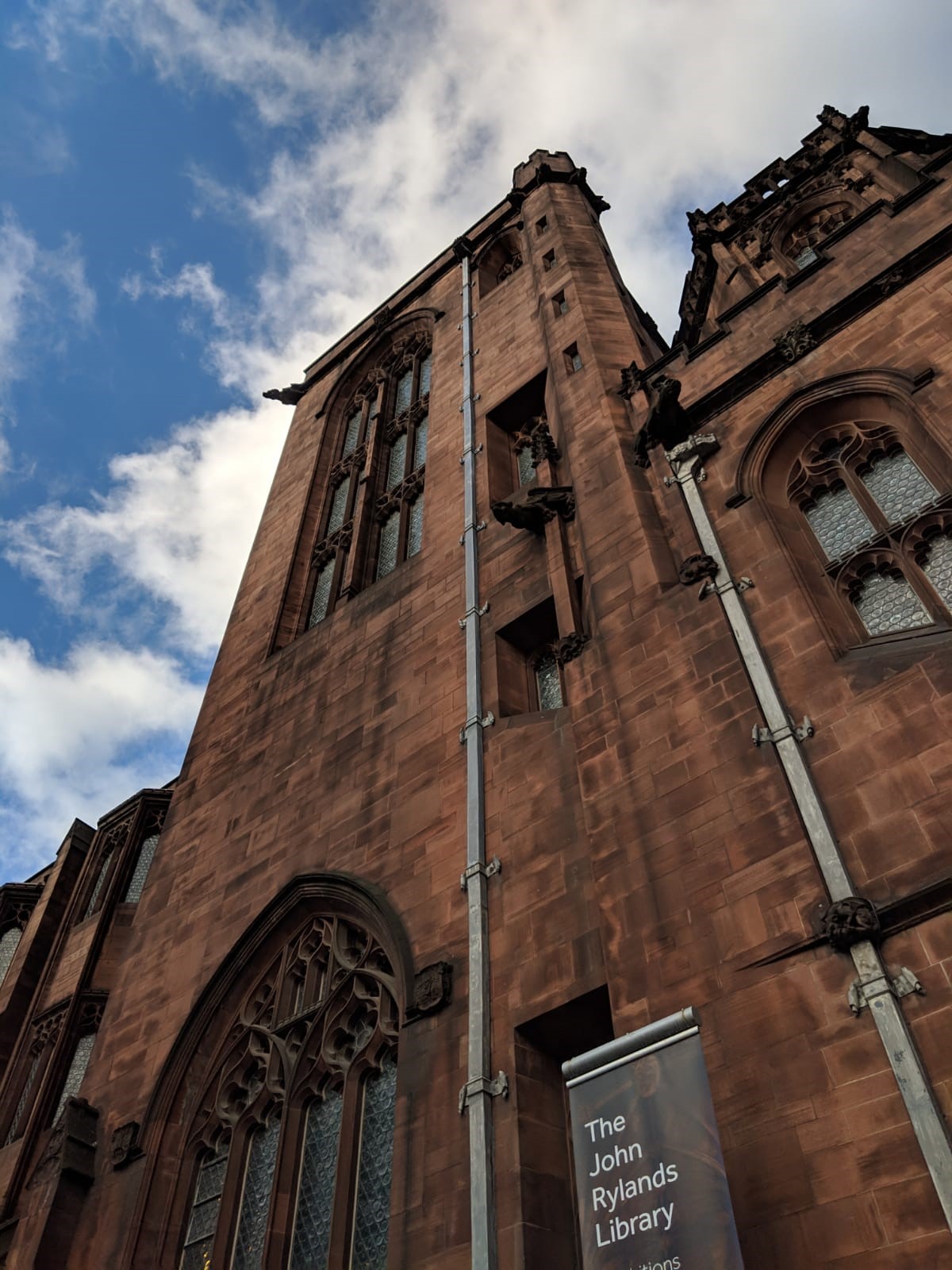 PHOTO: HAJRA SAEED
PHOTO: HAJRA SAEEDBack in 2003, a massive renovation project worth £17 million was launched. The entire building was re-roofed and the windows restored using 8,000 roundels in six different shades. New features were added, specifically a visitor entrance wing with souvenirs and refreshments. The library was re-opened on September 20, 2007, and thereafter, many previously inaccessible areas of the library were opened to public for the first time.
A lasting legacy
It was Enriqueta’s dedication to self-improvement and education, as well as her taste, intellect and active participation, which made John Rylands Library what it is today; a veritable architectural museum in itself. If you are planning a visit to Manchester, or even any other place in Britain, any time soon, this should surely be one of your mains stops.
Have something to add to the story? Share it in the comments below.



















COMMENTS
Comments are moderated and generally will be posted if they are on-topic and not abusive.
For more information, please see our Comments FAQ